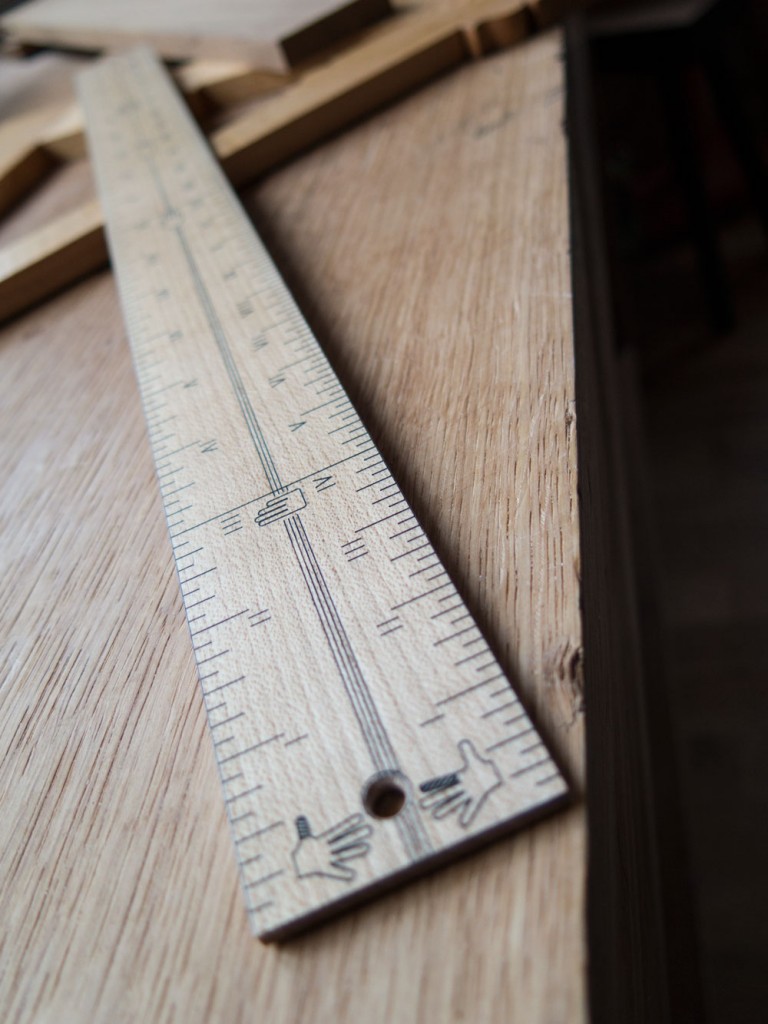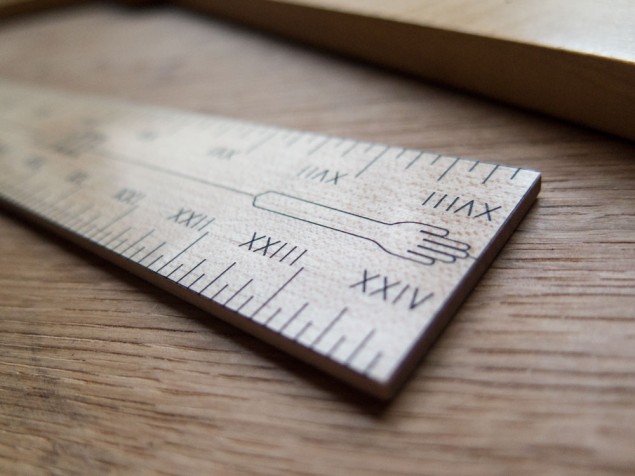We may receive a commission when you use our affiliate links. However, this does not impact our recommendations.
How we measure the world around us is a reflection of how our society interacts with the world. To wit: The metric system is, in my opinion, the most efficient way to gauge everything around us.
And that is exactly why I dislike it so. It is a system based on base-10 efficiency and little else.
If you spend any time investigating ancient measurement systems, you find that they are based on the human body – the thing that interacts with the world. What is “humane” about these systems are their intervals. The “foot” (from whatever system) is a factor of size that relates to the “pounce” – the finger or inch. Other measurements are related to our forearms, our outstretched arms and our heads.
I’m not trying to say there is great mystery wrapped up in these systems – quite the opposite. They are as plain as the nose on our face.
So I have been following the recent work of Brendan Gaffney, a woodworker and musician, with great interest. He has been investigating three ancient measuring systems – Roman, Egyptian and Japanese – and has produced three gorgeous rulers for sale that explore and explain the measurement systems from these three great civilizations.
I could go on and on about his research, but you should simply go here and read his words.
As I’m building two Roman workbenches this year for a quixotic book project, I decided to use the Roman system of measurement as I construct them, and so I adopted Gaffney’s Roman “Cubitus” ruler as my personal ruler for the project.
The ruler arrived on Friday and it is completely stunning. The CNC etchings paired with the hand-applied ink and tactile finish combine to make it an object that family members and guests pick up, admire and wonder about. Me, I just want to put the thing to use.
As of now, all three styles of rulers are sold out. But you should sign up for his newsletter to learn when he is able to make more. These might not be the rulers you use on your next project in the shop, but maybe they should be.
— Christopher Schwarz
Here are some supplies and tools we find essential in our everyday work around the shop. We may receive a commission from sales referred by our links; however, we have carefully selected these products for their usefulness and quality.











What is that Chris always says? Precision is the enemy of accuracy?
The very simple reason we use the English scale (12 inches to a foot, the inch divided into 16th) is its divisibility. If you have to divide 12.5 cm into equal parts more than twice, the decimal fraction run three places to the right. Who can find 3.125 on ruler. But, Divide 12-1/2 inch and you get 6-1/4, 3-1/8, 1-5/8 and so on down to the 32nd if need be. Much easier, as any finish carpenter would tell you.
The metric scale was developed as part of the intellectual philosophy of the French Revolution, which sought to eliminate God, the King and anything that smelled like the old order. Off with their heads! It has a purpose in the sciences, but doesn’t work nearly as well in the craft world.
Bought an old rule that turned out to be used for making cast iron molds. It was off to compensate for cast iron shrinkage. Measured for some small drawers with this rule and then cut with the scale on my table saw fence. Of course the drawers were junk. I placed the rule in a box frame with a sign that said “In case of arrogance, break glass”.
Some years ago, I found an old caliper but with a scale of: 6…12….18…24, a mystery After research I found it was in French inches (pouce), devided in12 “lignes”. The French inch is longer than the imperial. 25.8 mm.
I have to grin when I read about the precision of the metric system. Before I retired I used to work for a major gas turbine engine company and we had a engine that had metric parts made in the USA, England, France and Spain. Sometimes the USA parts would not mate with the English or French nor would the English and French always go together, but the Spanish parts wouldn’t fit anybodies parts. So the precision of the metric system is pretty much a myth. I’m sure there are fewer errors in adding things based on 10 instead of fractions.
A Spanish rule would be nice. Watch out though, a vertical vara is different than a horizontal vara?!. A Rehency French rule would be great too. One more bit: how about brass for blacksmiths, I love my Chesterman 503.
Currently sold out.
Know if he’s going to make more?
Hey, thanks for the write-up! I was dreaming someone might pick one of these up and have a real use for it. There will be a new batch in the store on Monday!
The genius of the imperial system is that it enabled commerce to proceed with reasonably accurate standardized measurements based on readily available benchmarks. The development of the metric system was largely driven by advances in the physical sciences in the mid to late 19th century which needed a precise measurement scheme that could easily scale from the very small (i.e., sub-atomic) to the very large (i.e., interstellar). Its adoption for commerce in Europe was more likely a matter of antipathy towards England than anything to do with human factors, 10 fingers/base 10 notwithstanding.
Be sure to let us know if tunics are more/less comfortable and more/less prone to holding chips and shavings during the builds.
Also, open-toed sandals won’t provide much protection so be careful with the #7 or #8’s!
Measure thrice cut once!
Great rulers. When the rush dies down I just might get some. I’m still looking for a Danish foot ruler.
The first thing you do when you build a traditional Inuit Kayak is make your own personal ruler based on your own body. You build by multiples of measurements like arm span, your personal cubit, and the “hitch-hiker’s fist” ( fist with thumb extended). I still have mine up in the rafters from a build years ago. I bet my hip measurement is different. I know my height is an inch+ shorter.
There’s a pretty good chance base 10 is based on the human body too – we have ten fingers after all. Like everything its debatable, but I like to think its so.